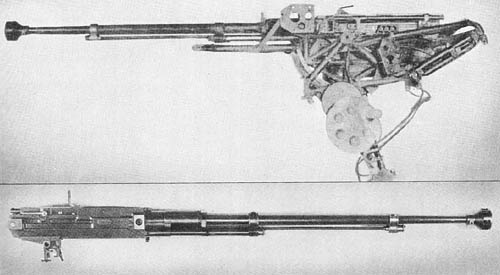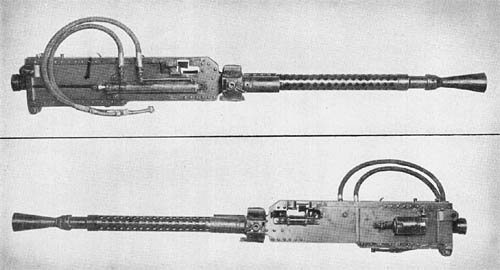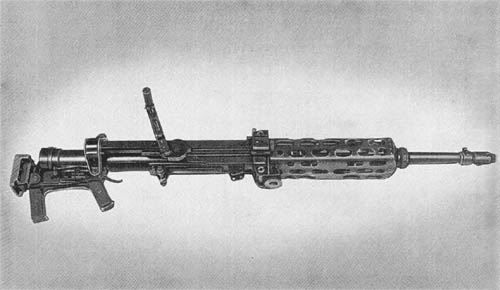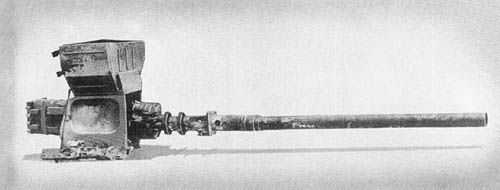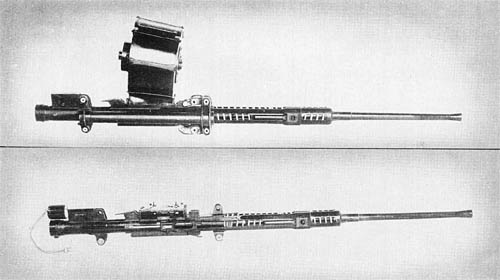
This is a gun of higher power than the Type 99 Mk. I, 20 mm cannon. Like the earlier gun, it operates on the Oerlikon principle and is found both with drum type magazine feed (Mod. III—top photo) and with belt feed (Mod. IV—lower photo).
The principal differences between this model and the Mk. I consist of a longer barrel and a longer chamber. The barrel protrudes 18 inches beyond the leading edge when mounted in the wings of fighter aircraft. The projectiles used are identical to the
SPECIFICATIONS
| Caliber | 20 mm (.787 in.) | |
| Weight of gun | 67 lbs. | |
| Length of gun (overall) | 73 ins. | |
| Length of barrel | 47 ins. | |
| Length of rifling | 41.5 ins. | |
| Number of grooves | 9 | |
| Depth of grooves | 0.026 in. | |
| Twist of rifling | Right hand | |
| Principle of operation | Blow back | |
| Feeding device | French drum or belt | |
| Capacity of drum | 100 rds. | |
| Cooling system | Air | |
| Sights | Reflector type | |
| Charging mechanism | Pneumatic | |
| Firing system | Flexible cable | |
| Effective range (est.) | 600-700 yds. | |
| Rate of fire (est.) | 400-500 r.p.m. | |
| Ammunition | Ball, A.P., A.P./I., T., H.E., H.E./T., H.E./I. |
Japanese: p. 254 (August 1, 1945)
